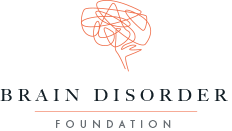The philosophy of Foundation For Disorders of Brain is to fund research from scientists who think out of the box to create innovative technology to make up for the deficiencies of the prior art that did not produce curative therapies for Alzheimer’s (AD), Parkinson’s (PD), Multiple System Atrophy (MSA), Glioblastoma (GBM), and numerous other brain disorders, including rare diseases such as Hunter Syndrome (HS), and Amyotrophic Lateral Sclerosis (ALS).
Parkinson’s Disease
Parkinson’s disease is a progressive incurable neurodegenerative disorder that causes unintended or uncontrollable movements, such as shaking, stiffness, and difficulty with balance and coordination. Symptoms usually begin gradually and worsen over time. As the disease progresses, people may have difficulty walking, swallowing, talking, as well failure of
autonomous system with death as the outcome. Globally, estimated 10 million individuals are inflicted with Parkinson’s. US alone has about 1.0 million patients costing about $52 billion per year in patient care.
In Parkinson’s disease, dopamine producing neurons in the brain gradually die. When dopamine levels decrease, it causes atypical brain activity, leading to impaired movement and other symptoms of Parkinson’s disease.
The cause of Parkinson’s disease is unknown, but several factors appear to play a role, including gene mutation, environmental triggers, and abnormal levels of oligomeric form of a protein, alpha-synuclein. The disease processes appear to start long before the symptoms and protein aggregation in brain is detected. Therefore, early detection and intervention with the blood-brain
barrier permeable drugs may only be the key approaches to halt disease progress.
Alzheimer’s Disease
Alzheimer’s disease (AD), described by German neurologist Alois Alzheimer in 1907, is the most common neurodegenerative disease in the elderly and a major cause of dementia. It causes progressive cognition deterioration with brain shrinkage and neuronal death. Estimated 55 million individuals in world are living with Alzheimer’s. US alone has 6.5 million Americans afflicted with the disease that would cost about $326 billion US dollars in 2022 to take care of the AD patients. Alzheimer’s kills more than breast cancer and prostate cancer combined. Deaths from Alzheimer’s have more than doubled than from heart disease. 1 in 3 seniors dies with Alzheimer’s or dementia. This disease poses a big threat to the global economy.
“Amyloid Hypothesis” had been proposed for the pathogenic mechanism of the disease. Although there has been a weak link between the amyloid burden and cognition, scientists all over the world have been developing drugs and mouse monoclonal antibodies for the last 3-4 decades to modulate the levels of amyloid-beta and tau tangles in the brain of AD patients. Multiple clinical trials targeting amyloid-beta have failed, though the drug was able to reduce the amyloid burden in the patients. The failure to improve cognition with the removal of plaque burden in AD patients questions the validity of the amyloid-hypothesis in human AD. There is a weak correlation between amyloid burden and cognition because more than 30% of cognitively normal older individuals have significant amounts of the plaque in the form of Aβ and tau deposition [Mormino SR, et al, the evolution of preclinical Alzheimer’s disease: implications for prevention trials, Neuron 297, 608 (2014)]. There is also only a weak correlation between amyloid burden and the intensity of brain atrophy [Joseph KA, et al, Beta-amyloid burden is not associated with rates of brain atrophy, Ann Neurol, 63, 204 (2008)]. Thus, it appears that the scientific community has been chasing the wrong target for several decades.
Though the classical neuropathological changes in AD, e.g. amyloid-plaque and the presence of neurofibrillary tangles (NFTs) in the brain have been observed, oligodendroglial degeneration and myelin impairment have also been observed in the brain of AD patients [Behrendt, et al Dynamic changes in myelin aberrations and oligodendrocyte degeneration in amyloidosis in mice and men, Glia, 61, 273 (2013)]; Dean DC, et al, Association of amyloid pathology with myelin alteration in pre-clinical Alzheimer’s disease, JAMA Neurol, 74, 41 (2017)]. It is not clear why the phenomenon of myelin impairment has been forgotten/neglected by the global scientific community for over 100 years, even though Alois Alzheimer established a link of myelin disruption in AD patients in 1911 [Alzheimer A, Frost H, Levy R., On certain peculiar diseases of old age, Hist Psychiatry, 2, 71, 2004; Moller HJ, Graeber MB, The Case described by Alois Alzheimer in 2011, Historical and conceptual perspective based on the clinical record and neuro-histological sections, Eur Arch Psychiatry Clin Neurosci,248, 111 (1998)].
The use of mouse monoclonal antibodies with about 0.1% brain uptake to target CNS pathogens is also questionable because it would be difficult to obtain sustainable therapeutic concentrations of the drug with such a low brain uptake. With a clear proof of their efficient brain uptake, it is wise to use mouse monoclonal antibodies for treating CNS disease.
Thus, there is an urgent need to develop blood-brain barrier permeable novel approaches that address the mechanisms and processes that lead to synaptic failure long before the symptoms and protein aggregation appears in patients’ brains.
Glioblastoma
Glioblastoma Multiform (GBM), “glioblastoma”, also known as Grade IV Astrocytoma, is the most common, aggressive, malignant, and lethal primary brain tumor in humans, involving glial cells and accounting for 52% of all functional tissue brain tumor cases and 20% of all intracranial tumors. GBM has an incidence of 2–3 cases per 100,000-person life-years in Europe and North America. It presents two variants: giant cell glioblastoma and gliosarcoma. Median survival without treatment is 4½ months. With treatment, about 50% of the patients diagnosed with GBM die within one year, while the remaining 50% within three years. Currently there are no curative treatments for GBM.
Foundation is looking for novel blood-brain barrier permeable drugs and approaches for non-invasive curative treatment of this fatal disease.
Helping unlock a new frontier in the treatment of neurodegenerative diseases.
For years, diseases of the central nervous system have been hidden behind a physical barrier. Although designed to prevent toxicity, swelling or bacteria from entering the brain, the Blood Brain Barrier (BBB) also blocks modern drugs. Molecules of small size such as Aspirin and Alcohol pass by diffusion, but larger molecules that can do serious work in turning around major diseases have been unable to pass through, until today.
Connect with us
We look forward to hearing from you
Management

